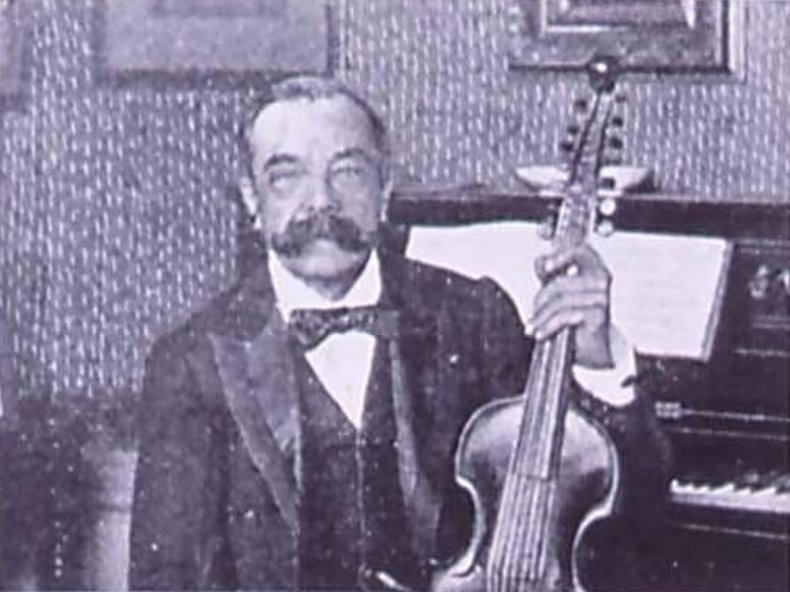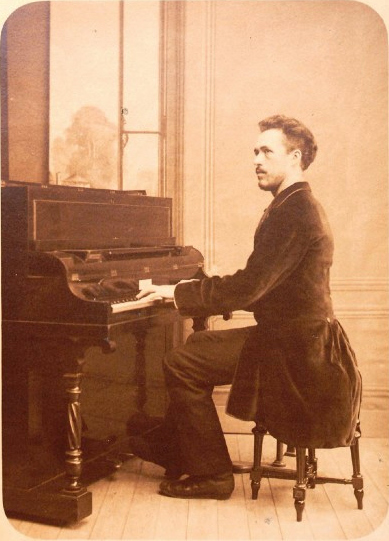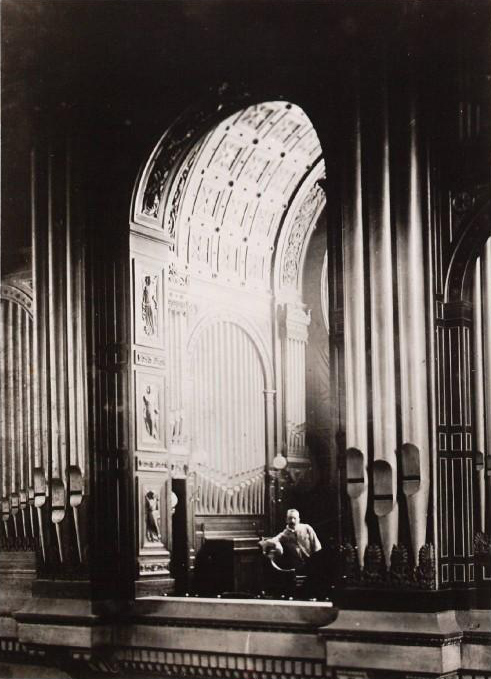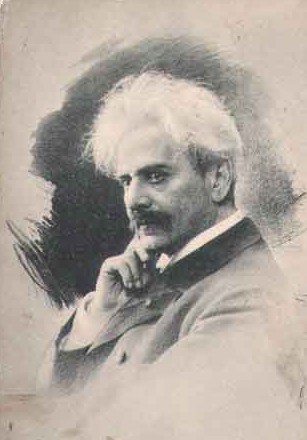|
Jules Delsart
Jules Delsart (24 November 1844 – 3 July 1900)MacGregor, "Jules Delsart"Grove Music Online (Subscription Access)/ref> was a 19th-century French cellist and teacher. He is best known for his arrangement for cello and piano of César Franck's Violin Sonata in A major. Musicologist Lynda MacGregor described Delsart as "one of the foremost French cellists of the period, with faultless technique, a precise bow and a sweet, though not large, tone." He was the owner of the 1689 'Archinto' Stradivari. Life and career Born in Valenciennes in 1844, Delsart began his studies at the Académie de Musique in his native city before transferring to the Conservatoire de Paris, where he earned a First Prize in cello performance in 1866. His principal teacher was Auguste Franchomme, whom he succeeded as professor of cello at the Conservatoire upon Franchomme's death in 1884. He remained in that position for the rest of his life. His students included Paul Bazelaire, Horace Britt, Marcel Casad ... [...More Info...] [...Related Items...] OR: [Wikipedia] [Google] [Baidu] |
Henri Mulet
Henri Gabriel Mulet (17 October 1878 – 20 September 1967) was a French composer, pipe and reed organist, and cellist. Biography Mulet was born on 17 October 1878 in Paris. His father Gabriel Léon Mulet was choirmaster of the Basilica of Sacré-Cœur, where his mother Blanche Victoire Augustine Gatin would also play the harmonium; as a boy he sometimes deputised for her. He studied at the Paris Conservatoire from 1890, where his teachers included Jules Delsart, Raoul Pugno, Xavier Leroux, Alexandre Guilmant and Charles-Marie Widor. He originally intended to be a cellist, but later served as an organist at Saint-Pierre-de-Montrouge and also taught at the École Niedermeyer and the Schola Cantorum, where he worked with his friend Vincent d'Indy. From 1922 to 1937 he was organist at St. Phillippe du Roule.Bate (1980), pp. 766-767Plender (1981), pp. 967, 969-767 Mulet's most notable works are for organ: the ''Esquisses byzantines'' (1914-1919) and the ''Carillon-Sortie'' (1911 ... [...More Info...] [...Related Items...] OR: [Wikipedia] [Google] [Baidu] |
Louis Van Waefelghem
Louis van Waefelghem (13 January 1840, in Bruges – 19 June 1908, in Paris) was a Belgian violinist, violist and one of the greatest viola d'amore players of the 19th century. He also composed several works and made transcriptions for viola and viola d'amore. Waefelghem was educated at the Athénée Royal in Bruges and then studied violin with Lambert Joseph Meerts at the Koninklijk Conservatorium in Brussels. After finding success as a violinist in Germany and at the Opera House in Budapest, he moved to Paris in 1863 to pursue a career as a performer on viola and viola d'amore. He played in the orchestra of the Paris Opera in 1868 and also in the Pasdeloup Orchestra. Waefelghem was Examiner of the Viola at the Conservatoire de Paris before Théophile Laforge was appointed the first Professor of Viola in 1894. His reputation as a gifted violist quickly spread and, after the Franco-Prussian War (1870–1871), he traveled to London where he played in the Royal Opera orch ... [...More Info...] [...Related Items...] OR: [Wikipedia] [Google] [Baidu] |
Martin Pierre Marsick
Martin Pierre Joseph Marsick (9 March 1847, in Jupille-sur-Meuse – 21 October 1924, in Paris), was a Belgian violin player, composer and teacher. His violin was made by Antonio Stradivari in 1705 and has since become known as the Ex Marsick Stradivarius. It was the instrument of David Oistrakh from 1966 to 1974. Marsick's nephew, Armand Marsick, the son of his brother Louis François, was a major violinist of the 20th century. Biography In 1854, seven-year-old Marsick was admitted to the Royal Conservatory of Music in Liège, to study violin with Désiré Heynberg (1831–1898). Graduating with the gold medal in 1864, he continued his studies in Brussels with Hubert Léonard and became the pupil of Joseph Massart at the Paris Conservatory in 1868. In 1871, Marsick joined the newly established Société Nationale de Musique in Paris and also founded a string quartet. Between 1875 and 1895, he performed in concerts in collaboration with the leading conductors in Paris - Cha ... [...More Info...] [...Related Items...] OR: [Wikipedia] [Google] [Baidu] |
Chamber Music
Chamber music is a form of classical music that is composed for a small group of instruments—traditionally a group that could fit in a palace chamber or a large room. Most broadly, it includes any art music that is performed by a small number of performers, with one performer to a part (in contrast to orchestral music, in which each string part is played by a number of performers). However, by convention, it usually does not include solo instrument performances. Because of its intimate nature, chamber music has been described as "the music of friends". For more than 100 years, chamber music was played primarily by amateur musicians in their homes, and even today, when chamber music performance has migrated from the home to the concert hall, many musicians, amateur and professional, still play chamber music for their own pleasure. Playing chamber music requires special skills, both musical and social, that differ from the skills required for playing solo or symphonic works. ... [...More Info...] [...Related Items...] OR: [Wikipedia] [Google] [Baidu] |
Benjamin Godard
Benjamin Louis Paul Godard (18 August 184910 January 1895) was a French violinist and Romantic-era composer of Jewish extraction, best known for his opera ''Jocelyn''. Godard composed eight operas, five symphonies, two piano and two violin concertos, string quartets, sonatas for violin and piano, piano pieces and etudes, and more than a hundred songs. He died at the age of 45 in Cannes (Alpes-Maritimes) of tuberculosis and was buried in the family tomb in Taverny in the French department of Val-d'Oise. Life and career Godard was born in Paris in 1849. He entered the Conservatoire de Paris in 1863 where he studied under Henri Vieuxtemps (violin) and Napoléon Henri Reber (harmony) and accompanied Vieuxtemps twice to Germany. In 1876, his ''Concerto romantique'' was performed at the Concerts Populaires, and other of his large works were also performed at these concerts. In 1878, Godard was the co-winner of the Prix de la Ville de Paris. His winning composition, a dramatic symphony ... [...More Info...] [...Related Items...] OR: [Wikipedia] [Google] [Baidu] |
Léon Boëllmann
Léon Boëllmann (; 25 September 1862 – 11 October 1897) was a French composer, known for a small number of compositions for organ. His best-known composition is '' Suite gothique'' (1895), which is a staple of the organ repertoire, especially its concluding Toccata. Life Boëllmann was born in Ensisheim, Haut-Rhin, Alsace, the son of a pharmacist. In 1871, at the age of nine, he entered the École de Musique Classique et Religieuse (L'École Niedermeyer) in Paris, where he studied with its director, Gustave Lefèvre, and with Eugène Gigout. There, Boëllmann won first prizes in piano, organ, counterpoint, fugue, plainsong, and composition. After his graduation in 1881, Boëllmann was hired as "organiste de choeur" at the Church of St. Vincent de Paul in the 10th arrondissement of Paris, and six years later he became cantor and ''organiste titulaire'', a position he held until his early death, probably from tuberculosis. In 1885, Boëllmann married Louise, the daughter of G ... [...More Info...] [...Related Items...] OR: [Wikipedia] [Google] [Baidu] |
Camille Saint-Saëns
Charles-Camille Saint-Saëns (; 9 October 183516 December 1921) was a French composer, organist, conductor and pianist of the Romantic music, Romantic era. His best-known works include Introduction and Rondo Capriccioso (1863), the Piano Concerto No. 2 (Saint-Saëns), Second Piano Concerto (1868), the Cello Concerto No. 1 (Saint-Saëns), First Cello Concerto (1872), ''Danse macabre (Saint-Saëns), Danse macabre'' (1874), the opera ''Samson and Delilah (opera), Samson and Delilah'' (1877), the Violin Concerto No. 3 (Saint-Saëns), Third Violin Concerto (1880), the Symphony No. 3 (Saint-Saëns), Third ("Organ") Symphony (1886) and ''The Carnival of the Animals'' (1886). Saint-Saëns was a musical prodigy; he made his concert debut at the age of ten. After studying at the Paris Conservatoire he followed a conventional career as a church organist, first at Saint-Merri, Paris and, from 1858, La Madeleine, Paris, La Madeleine, the official church of the Second French Empire, Fren ... [...More Info...] [...Related Items...] OR: [Wikipedia] [Google] [Baidu] |
Louis Breitner , names sometimes translated to English as "Louis"
{{disambiguation ...
Louis may refer to: * Louis (coin) * Louis (given name), origin and several individuals with this name * Louis (surname) * Louis (singer), Serbian singer * HMS ''Louis'', two ships of the Royal Navy See also Derived or associated terms * Lewis (other) * Louie (other) * Luis (other) * Louise (other) * Louisville (other) * Louis Cruise Lines * Louis dressing, for salad * Louis Quinze, design style Associated names * * Chlodwig, the origin of the name Ludwig, which is translated to English as "Louis" * Ladislav and László - names sometimes erroneously associated with "Louis" * Ludovic, Ludwig, Ludwick, Ludwik Ludwik () is a Polish given name. Notable people with the name include: * Ludwik Czyżewski, Polish WWII general * Ludwik Fleck (1896–1961), Polish medical doctor and biologist * Ludwik Gintel (1899–1973), Polish-Israeli Olympic soccer player ... [...More Info...] [...Related Items...] OR: [Wikipedia] [Google] [Baidu] |
St James's Hall
St. James's Hall was a concert hall in London that opened on 25 March 1858, designed by architect and artist Owen Jones, who had decorated the interior of the Crystal Palace. It was situated between the Quadrant in Regent Street and Piccadilly, and Vine Street and George Court. There was a frontage on Regent Street, and another in Piccadilly. Taking the orchestra into account, the main hall had seating for slightly over 2,000 persons. It had a grand hall long and broad, the seating was distributed between ground floor, balcony, gallery and platform and it had excellent acoustics. On the ground floor were two smaller halls, one square; the other by . The Hall was decorated in the 'Florentine' style, with features imitating the great Moorish Palace of the Alhambra. The Piccadilly facade was given a Gothic design, and the complex of two restaurants and three halls was hidden behind Nash's Quadrant.Hobhouse, Hermione. ''History of Regent Street'' (Macdonald and Jane's, L ... [...More Info...] [...Related Items...] OR: [Wikipedia] [Google] [Baidu] |
Edward Howell (cellist)
Edward Howell, FRAM (5 February 1846 – 1898) was a British cellist and music professor of the late 19th century. He studied cello at the Royal Academy of Music in London later becoming professor of cello at the Royal College of Music, the Royal Academy of Music and the Guildhall School of Music in London. Early life Edward Howell was born in St. Pancras, London, England in 1846. He studied cello at the Royal Academy of Music where he was taught by Piatti. Playing career Howell became a member of the Italian Opera Orchestra and from 1872 of the Covent Garden Theatre orchestra. He played regularly at festivals and concerts both in London and throughout the provinces becoming well known as a soloist and quartet player. He was a member of the Philharmonic Society and for many years principal cellist in its orchestra – holding the same position in the Leeds Festival orchestra from 1880; he was also principal cellist at the Three Choirs Festivals and in the Queen's Band. He appear ... [...More Info...] [...Related Items...] OR: [Wikipedia] [Google] [Baidu] |
David Popper
David Popper (June 16, 1843 – August 7, 1913) was a Bohemian cellist and composer. Some other sources list his date of birth as December 9, 1843. Life Popper was born in Prague, and studied music at the Prague Conservatory. His family was Jewish. He studied the cello under Julius Goltermann (1825–1876), and soon attracted attention. He made his first tour in 1863; in Germany he was praised by Hans von Bülow, son-in-law of Franz Liszt, who recommended him as Chamber Virtuoso in the court of Prince von Hohenzollern-Hechingen in Löwenberg. In 1864, he premiered Robert Volkmann's Cello Concerto in A minor, Op. 33, with Hans von Bülow conducting the Berlin Philharmonic. He lost this job a couple of years later due to the prince's death. He made his debut in Vienna in 1867, and was made principal cellist at the Hofoper. From 1868 to 1870 he was also a member of the Hellmesberger Quartet. In 1872, he married pianist Sophie Menter, a pupil of Liszt. She later joined the staff ... [...More Info...] [...Related Items...] OR: [Wikipedia] [Google] [Baidu] |









